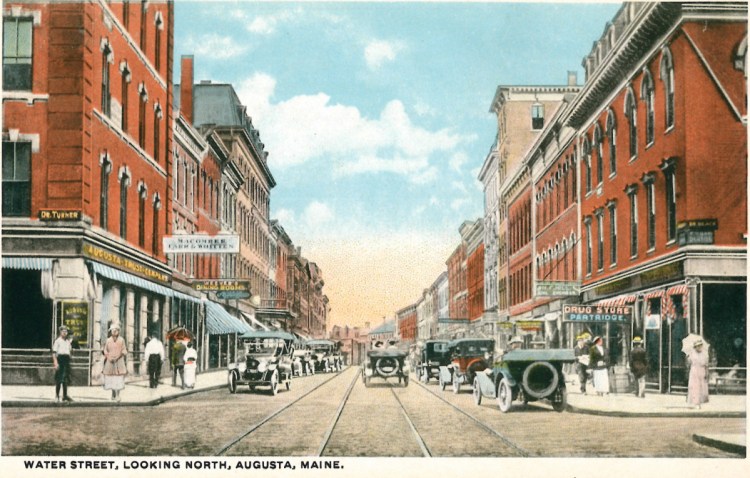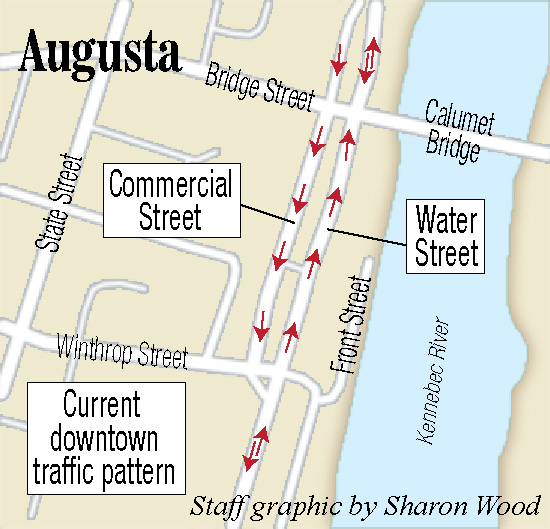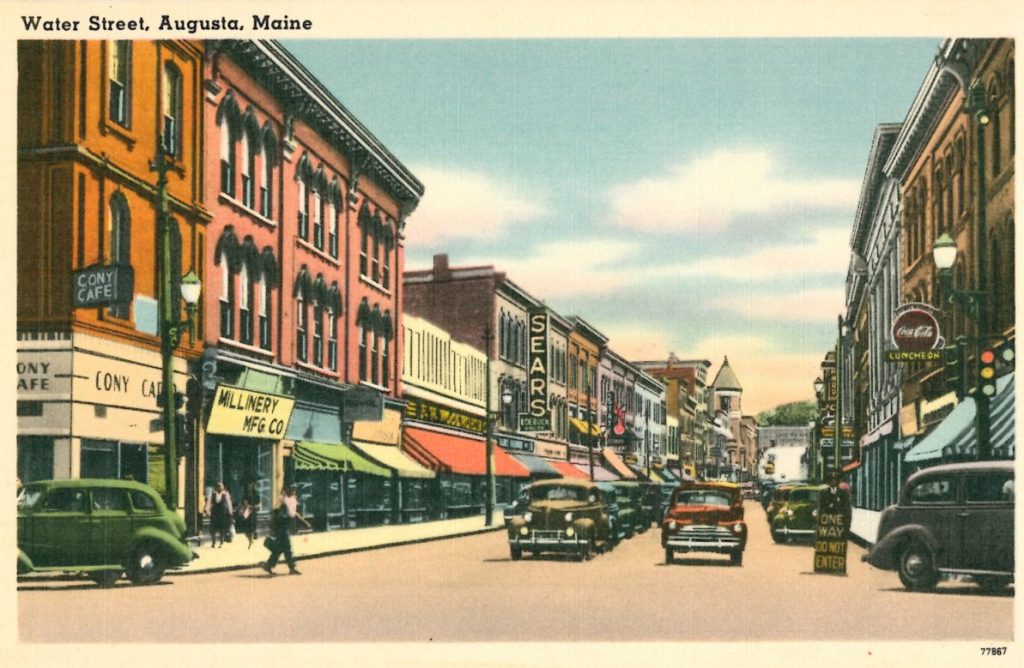AUGUSTA — City and state officials expressed concern that changing downtown Water Street to two-way traffic could make it harder for firetrucks to get through and make snow removal a challenge.
The findings of a traffic study by a consultant hired by the city to look into changing the one-way section of downtown Water Street, between Bridge and Winthrop streets, to two-way traffic, were presented to city councilors Thursday. The study determined it is possible to make the change, though doing so would cost about $75,000 and eliminate 12 to 16 parking spaces.
Considering changing the flow of traffic was recommended by a team of downtown experts who visited Augusta in 2013, as a way to help spur vitality and slow traffic.
Fire Chief Roger Audette, asked for his opinion by councilors, said he’s concerned the change could make it more difficult for firetrucks and rescue vehicles to get through downtown. Hartford Station, the Fire Department’s headquarters, is on Rines Hill, just above the southern end of downtown.
He expressed concern that with two-way traffic, motorists stopped at intersections would have no place to go and not enough room to pull over to the side, and thus could block firetrucks from getting through.
“We’re concerned about that, especially in the wintertime,” Audette said. “If you have people backed up, it makes it impossible to get through. If it’s narrowed by snow, it’s difficult to drive through there.”
Steve Landry, state traffic engineer, said the state Department of Transportation’s concerns about the possible change to two-way include that it would be a challenge for public works trucks to remove snow during storms while still maintaining two-way traffic if there are cars parked on both sides of the street.
Landry said the change is feasible but the city should be aware of its possible effects and pitfalls.
The study by Diane Morabito, of Maine Traffic Resources, commissioned by the city at a cost of $19,000, determined changing the section of Water Street between Winthrop and Bridge streets from one-way to two-way traffic is possible with relatively minor alterations to infrastructure on the street.
But it would require the elimination of 12 parking spaces on Water Street to accommodate the change in lane use, including the loss of seven on the northern end of that section of street to provide space for a 175-foot right-turn lane at the intersection of Water and Bridge streets. It also probably would take away two parking spaces on Oak Street and two on Commercial Street, to provide loading zones for deliveries by trucks to downtown businesses. Those loading zones would be necessary, she said, because now trucks can unload by stopping in a travel lane on Water Street, and traffic can simply go around them in the other lane.
When traffic is flowing both ways, that wouldn’t be possible, without vehicles going into the oncoming lane to get around stopped trucks, so trucks will need somewhere else to unload deliveries.
Morabito and Landry noted future traffic flow projections should be considered, too, and an increase in traffic could require more space for cars to line up for intersections — which could, in turn, require the removal of more parking spaces.
Public comment on the proposal was not taken Thursday. City Manager William Bridgeo noted there will be a discussion of the proposal with the public, including downtown merchants.
Studying converting to two-way traffic was included as one of the Augusta City Council’s goals for 2017 and was requested by the Augusta Downtown Alliance, a downtown business advocacy group.
Michael Hall, executive director of the Augusta Downtown Alliance, has said the alliance hasn’t taken a position yet on whether to change from one-way to two-way traffic.
Hall said that, in general, studies have indicated when downtowns switch to two-way traffic, they usually see increases in traffic and increases in pedestrian safety because it slows traffic.
The study estimated changing Augusta’s downtown for two-way traffic would cost about $75,000. However, Matt Nazar, development director for the city, said the state Department of Transportation would require the city to put a new layer of pavement on the road as part of the change, which he said would add another $20,000 to $25,000 to the cost.
Other changes would include either eliminating or replacing a traffic island at the intersection of Water and Winthrop streets so trucks coming south could turn right off Water onto Winthrop. Crosswalks on Water Street would need to be upgraded to meet current American’s with Disabilities Act standards. And traffic signals would have to be altered to reflect the new patterns.
The study recommends leaving Commercial Street, which is just above and parallel to Water Street and runs one way in the opposite direction, as a one-way street.
Keith Edwards — 621-5647
Send questions/comments to the editors.





